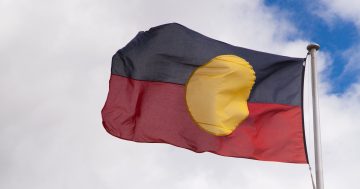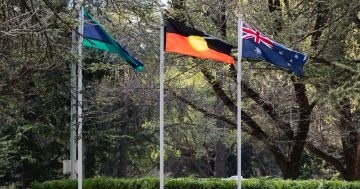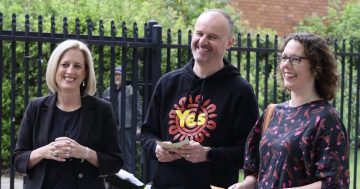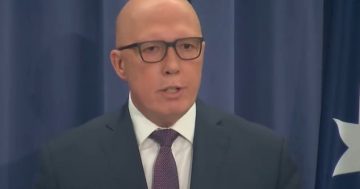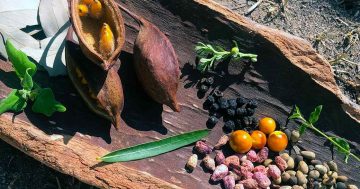
MLA Elizabeth Kikkert says the wellbeing gap for ACT Aboriginal and Torres Strait Islanders is worryingly large. Photo: Dominic Giannini.
National Close the Gap Day this week highlighted the persistent lack of health equality for Aboriginal and Torres Strait Islander people.
For example, figures from the 2020 national Closing the Gap Report show that Indigenous children aged 0–4 die at more than twice the rate of non-Indigenous children.
Following childhood, mortality rates remain higher for Aboriginals and Torres Strait Islanders across all age groups, according to data from the Australian Institute of Health and Welfare and for those aged 35–44, the rate of death is a frightening 4.5 times greater for females and 3.9 times greater for males.
Sadly, health and wellbeing are not the only areas where Aboriginal and Torres Strait Islander people experience an unacceptable gap in outcomes. And despite Canberra’s relative affluence and compactness, many significant inequities occur here in the nation’s capital – too often overlooked and unseen.
According to ABS data, since 2015 the ACT has had the highest ratio of Indigenous incarceration in Australia. Last year, Aboriginals and Torres Strait Islanders in Canberra were 19 times more likely to be locked up than other residents. This means that, despite comprising only 1.6 per cent of the territory’s population, Indigenous Canberrans make up almost one-quarter of the prisoners in the Alexander Maconochie Centre.
At the same time, Aboriginal and Torres Strait Islander children in Canberra are 10 times more likely to be removed from their families – the second highest ratio of all Australian jurisdictions according to the Productivity Commission.
A limited trial of family-led decision-making has successfully kept Indigenous kids safe without the need for removal but there is still no legal entitlement in the ACT for this proven approach. The result is an unnecessarily adversarial child protection system that dictates to families instead of respectfully working with them.
Another serious gap has recently opened up for Canberra’s Indigenous families. In 2015–16, four out of five Aboriginal and Torres Strait Islander young people successfully completed their community-based justice orders in the ACT. But by last financial year, this figure had plummeted to only one in six. (In stark contrast, the average rate of successful completions was 80.8 per cent nationally.)
I understand that many instances of Indigenous disadvantage, such as infant mortality, arise from multiple complex factors, but this is not one of them. It is the government’s responsibility to provide comprehensive case management including connecting young people to the specific community supports they need to stay out of trouble and comply with their legal orders. This is precisely what successful jurisdictions do.
But when I asked the minister in recent hearings to explain what has gone wrong with this process and what the ACT Government is doing to fix it, I was told that some of these youth are ‘disengaged’ and therefore difficult to help.
This is not good enough. As a senior Indigenous leader emphatically said to me afterwards, ‘Engagement with young people is the service provider’s responsibility’.
If Aboriginal and Torres Strait Islander youth in trouble are not cooperating with the case management that is currently being offered to them there will be valid reasons why.
As a related example, the Official Visitor for Children and Young People included in her February 2021 report that the government’s Narrabundah House, intended as a diversionary option to help keep Indigenous young people out of detention, is under-utilised.
Why? According to the report, the ACT Aboriginal and Torres Strait Islander community have cultural concerns about the government’s operational framework for the facility and therefore are reluctant to use it. In short, it does not meet the needs of those for whom it is intended.
Similarly, we need to learn from them – precisely why so many Indigenous youth in Canberra are struggling to fully engage with the government’s current case management approach. Then we must provide appropriate, culturally sensitive alternatives.
If we are genuinely serious about closing gaps, we must close this one quickly before it becomes entrenched. And then we need to keep listening to Aboriginal and Torres Strait Islander people and fully engage them in decision-making as we seek to close the rest.
Elizabeth Kikkert is a Liberal member for Ginninderra in the ACT Legislative Assembly.












